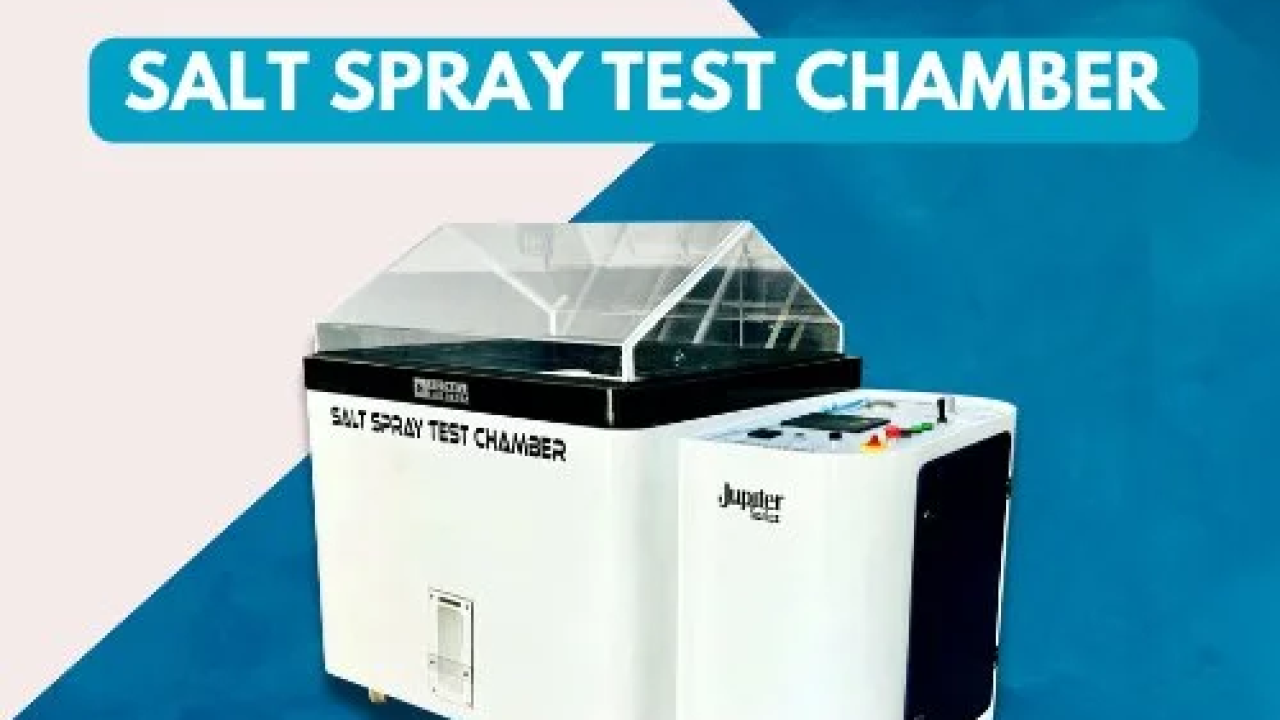Technological Advancements in Salt Spray Chambers by Effective Lab India
Posted on 13 June, 2024 by Effective Lab India

A Salt spray chamber, also known as a salt fog or salt mist chamber, is essential for testing the corrosion resistance of materials and coatings. In recent years, Indian manufacturers have introduced several technological advancements in these chambers to improve their efficiency, accuracy, and user-friendliness. Here are some notable advancements:
1. Advanced Control Systems
Effective Lab India salt spray chamber is equipped with sophisticated control systems that allow precise regulation of test parameters such as temperature, humidity, and salt concentration. These systems often feature:
- Touchscreen interfaces for easy operation
- Programmable logic controllers (PLCs) for automated test cycles
- Remote monitoring and control via mobile apps or web interfaces
2. Enhanced Corrosion Simulation
Effective Lab India as a leading salt spray chamber manufacturer has developed advanced mechanisms to simulate various corrosive environments more accurately. Some of these enhancements include:
- Multi-function testing capabilities to simulate salt spray, cyclic corrosion, and humidity tests
- Uniform fog distribution systems for consistent test results
- Improved atomizers and nozzles to generate fine and uniform mist
3. Energy Efficiency
With an increasing focus on sustainability, Effective Lab is designing salt spray chambers that consume less energy. Key features contributing to energy efficiency include:
- Insulated chambers to minimize heat loss
- Energy-efficient heating elements
- Optimized air circulation systems
4. Robust Construction and Materials
To ensure longevity and reliability, Effective Lab Salt Spray Chamber manufacturers are using high-quality materials and robust construction techniques. These improvements include:
- Corrosion-resistant materials such as stainless steel and reinforced plastics
- Durable seals and gaskets to prevent leaks
- Enhanced structural integrity to withstand harsh testing conditions
5. Data Logging and Analysis
Data logging and analysis capabilities have become integral to modern salt spray chambers. These features enable users to:
- Record and store test data for future reference
- Generate detailed reports and graphs for analysis
- Integrate with laboratory information management systems (LIMS)
6. Safety Features
Safety is a critical concern in any testing environment. We have incorporated several safety features in our salt spray chambers, such as:
- Automatic shut-off mechanisms in case of system failure
- Over-temperature and over-pressure protection
- Emergency stop buttons.
Read Also: Salt Spray Tester for Guaranteeing Anti-Corrosive Properties of Metals
Purpose of Using Salt Spray Chamber
The primary purpose of a salt spray test chamber is to evaluate the corrosion resistance of materials and coatings. This helps manufacturers and researchers improve the durability and lifespan of their products.
Components
- Chamber: The main enclosure where the test specimens are placed and exposed to the salt fog.
- Salt Solution Reservoir: Holds the salt solution, typically a mixture of sodium chloride (NaCl) and distilled water.
- Atomizer: Converts the salt solution into a fine mist or fog dispersed inside the chamber.
- Heating System: Maintains the temperature inside the chamber to simulate various environmental conditions.
- Control Panel: The user can set and monitor test parameters such as temperature, humidity, and duration.
Test Standards
Several international standards govern the procedures and requirements for salt spray testing, including:
- ASTM B117: Standard Practice for Operating Salt Spray (Fog) Apparatus
- ISO 9227: Corrosion Tests in Artificial Atmospheres - Salt Spray Tests
- JIS Z 2371: Japanese Industrial Standard for Salt Spray Testing
Procedure
- Preparation: Clean and prepare the test specimens according to the relevant standards.
- Solution Preparation: Prepare the salt solution, usually a 5% NaCl solution, and fill the reservoir.
- Setup: Place the specimens inside the chamber and set the desired test parameters on the control panel.
- Testing: Start the test and allow the chamber to operate for the specified duration, typically 24 to 1,000 hours.
- Evaluation: After the test, remove the specimens and evaluate the extent of corrosion using visual inspection or other analytical methods.
Applications
Salt spray test chambers are used in a variety of industries, including:
- Automotive: Testing the corrosion resistance of car parts and coatings.
- Aerospace: Evaluating the durability of aircraft components.
- Marine: Assessing the performance of materials used in shipbuilding and offshore structures.
- Construction: Ensuring the longevity of building materials and protective coatings.
In conclusion, Effective Lab the testing instrument manufacturers are at the forefront of innovation in salt spray test chamber technology. By integrating advanced control systems, enhancing corrosion simulation, improving energy efficiency, using robust materials, incorporating data logging capabilities, and ensuring safety, they are meeting the evolving needs of industries that rely on these critical testing instruments.
https://www.strictlygreece.com/
24 March, 2017